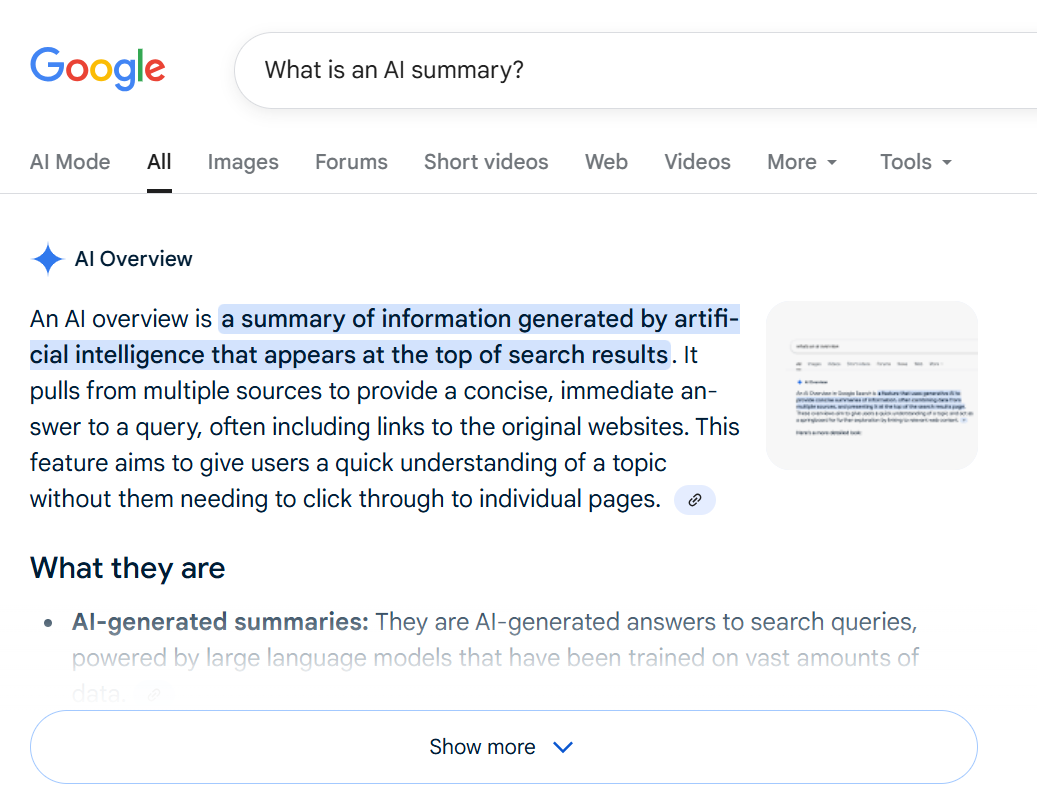
How to Be Found in the Age of AI Search
The way people find information online is changing fast. Search engines are no longer just showing a list of links. With AI search, they’re generating direct, conversational answers—pulling content from across the web and summarising it for the user. That means your business needs to adapt. Because if you’re not being referenced or quoted in those AI summaries, you’re invisible in the new world of search.
What Is AI Search?
AI search uses artificial intelligence to interpret context, intent, and meaning behind a question. Instead of returning ten blue links, it creates a tailored, human-style answer—often pulling from multiple sources. Google’s Search Generative Experience (SGE), Microsoft’s Copilot, and platforms like Perplexity are early examples. They don’t just rank pages. They understand them.
The shift is clear: content that helps, teaches, or explains now carries more weight than content stuffed with keywords. Search is becoming conversational. AI systems scan and summarise relevant insights, rewarding clarity, authority, and usefulness.
How It Differs from Traditional Search
Traditional SEO was about optimising for keywords and backlinks to climb the SERP (Search Engine Results Page). AI search goes deeper—it extracts meaning from your content and determines whether it can help answer a specific question.
Old SEO asked, “Does your page match the search term?”
AI search asks, “Does your page explain the concept better than others?”
This is a major change for business owners. Your content isn’t competing for position—it’s competing for inclusion in AI summaries.
How Businesses Can Take Advantage
The key to being found by AI search is building authority through clear, question-led content. Blogs are one of the most effective tools for this. Every time you answer a specific question about your product, service, or industry, you create a data point AI can reference.
Examples:
-
“How does renewable energy reduce business costs?”
-
“What’s the difference between brand identity and logo design?”
-
“Why is cybersecurity important for small businesses?”
AI search thrives on this type of content. It’s structured, intent-driven, and genuinely helpful—exactly what modern algorithms are built to prioritise.
Other steps to take:
-
Use natural language. Write like a person answering a question, not like an SEO robot.
-
Structure clearly. Use headings, bullet points, and short paragraphs—AI systems parse structure as meaning.
-
Stay consistent. Regular posts reinforce your authority and improve your chances of being cited.
-
Be specific. Cover narrow topics deeply instead of broad ones superficially.
Why It Matters Now
AI-driven search isn’t a future trend—it’s already here. Businesses that adapt early will dominate visibility in the new search landscape. Those who don’t will watch traffic fall, even if they once ranked well on Google.
The opportunity lies in expertise. If your website consistently answers real questions and offers valuable insights, AI engines will find, understand, and feature your content.
At Creo Design, we’re helping businesses evolve for this new search reality—combining intelligent design, strong brand strategy, and content built to perform in both human and AI-driven search.
Your next customer might not click through ten results. They’ll ask one question. Make sure the answer comes from you.
Contact us on [email protected] to learn more.
















